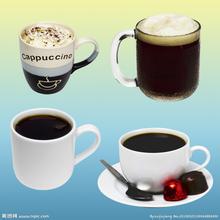Introduction of Ecuadorian Coffee Flavor and Taste Manor production area characteristics of Ecuadorian Coffee Hassanda Coffee Garden
Ecuadorian cocoa and coffee beans
Why did Mr. Marcolini choose Ecuadorian cocoa beans to make the world's best chocolate? Here are a few numbers that will give you the answer. This comes from the allure of aromatic cocoa, which accounts for only 5% of the world's cocoa production and is the only cocoa bean that can make a mouth-watering delicacy. Of that precious 5 per cent, 63 per cent came from Ecuador. Due to its unique geographical climate, 80% of Ecuador's cocoa beans belong to this aromatic type.
By far the most prized chocolate in the world is To 'ak, which costs as much as $260 for a 1.5-ounce bar. Ecuador faces the Pacific Ocean, about 900 kilometers west of its west coast, near the equator, there is a Galapagos Islands (Galapagos Island) is also its territory, also known as Cologne Island, producing the famous Galapagos coffee. In order to protect the natural ecology, the Ecuadorian government has designated the archipelago as a national park, and banned the use of chemical fertilizers, pesticides and other chemicals, so the coffee in the Galapagos Islands is recognized as organic coffee.
Galapagos coffee is balanced and neutral, with a medium body, a distinct but pleasant acidity, and a distinctive aroma. But since it is rarely seen on the market, not many people talk about it-in fact ecuador means "equator" in spanish. Ecuadorian coffee is not classified as fine coffee due to the use of old-fashioned traditional harvesting and processing methods, so it is generally less seen between Colombia and Peru. Ecuador, which passes through the equator, is one of the few countries in South America that produces both Arabica coffee and robasta coffee.

Important Notice :
前街咖啡 FrontStreet Coffee has moved to new addredd:
FrontStreet Coffee Address: 315,Donghua East Road,GuangZhou
Tel:020 38364473
- Prev

Introduction of Ecuadorian Coffee Flavor and Taste Manor production area characteristics of Ecuadorian Coffee Hassanda Coffee Garden
Ecuadorian cocoa and coffee beans Why did Mr. Marcolini choose Ecuadorian cocoa beans to make the world's top delicious chocolates? Here is a set of numbers to give you the answer. This comes from the charm of aromatic cocoa. Only 5% of the world's cocoa production is aromatic cocoa beans, which can make mouthwatering delicacies. In this precious place
- Next

Introduction of Santa Cruz Manor in Ecuador Coffee Flavor Manor
The coffee beans produced in Ecuador's Galapagos Islands are organic coffee beans, thanks to the unique ecological environment such as volcanic soil and microclimate, coupled with the fact that they do not use any chemical fertilizers or pesticides, they are recognized as natural green boutique coffee. this naturally grown coffee has a mild taste with a hint of flowers and fruit and caramel. It is understood that the Galapagos Islands are far from Eritrea.
Related
- Does Rose Summer choose Blue, Green or Red? Detailed explanation of Rose Summer Coffee plots and Classification in Panamanian Jade Manor
- What is the difference between the origin, producing area, processing plant, cooperative and manor of coffee beans?
- How fine does the espresso powder fit? how to grind the espresso?
- Sca coffee roasting degree color card coffee roasting degree 8 roasting color values what do you mean?
- The practice of lattes: how to make lattes at home
- Introduction to Indonesian Fine Coffee beans-- Java Coffee producing area of Indonesian Arabica Coffee
- How much will the flavor of light and medium roasted rose summer be expressed? What baking level is rose summer suitable for?
- Introduction to the characteristics of washing, sun-drying or wet-planing coffee commonly used in Mantenin, Indonesia
- Price characteristics of Arabica Coffee Bean Starbucks introduction to Manning Coffee Bean Taste producing area Variety Manor
- What is the authentic Yega flavor? What are the flavor characteristics of the really excellent Yejasuffi coffee beans?

